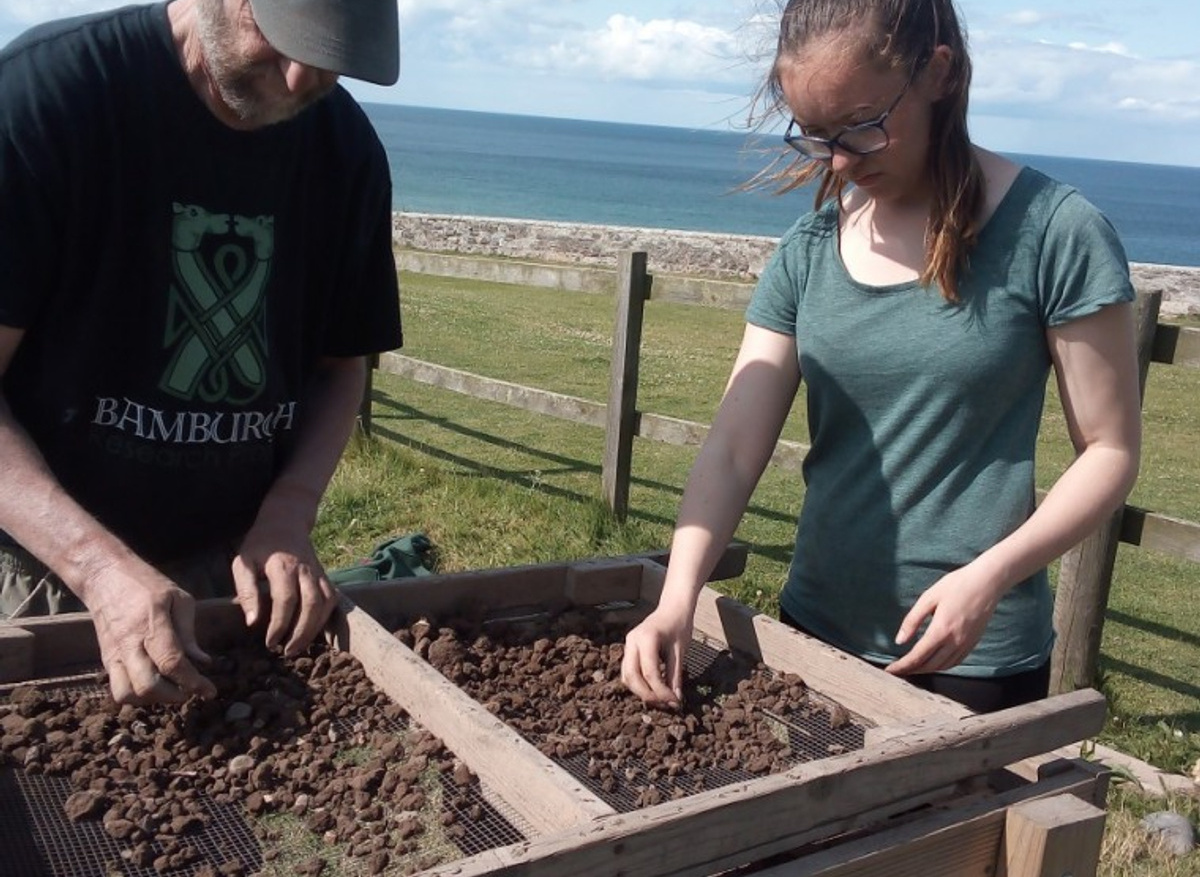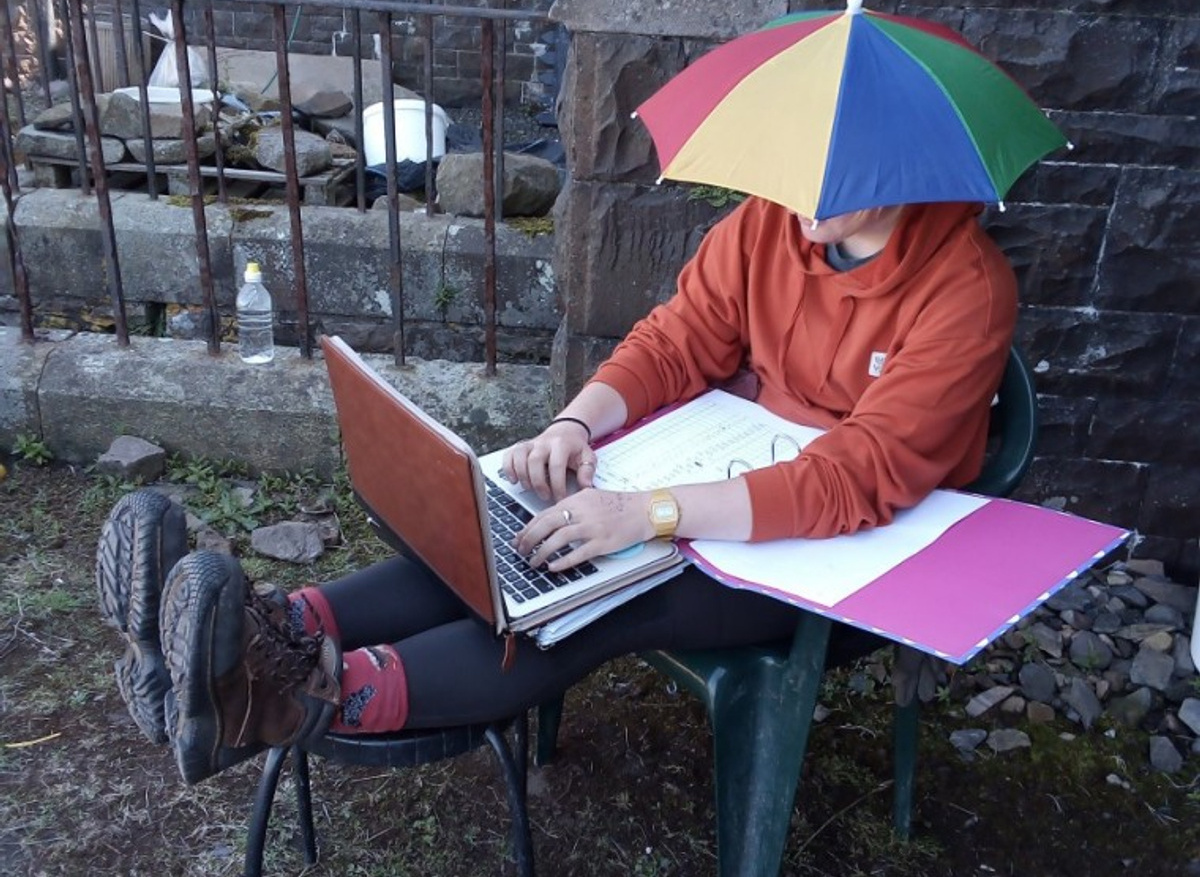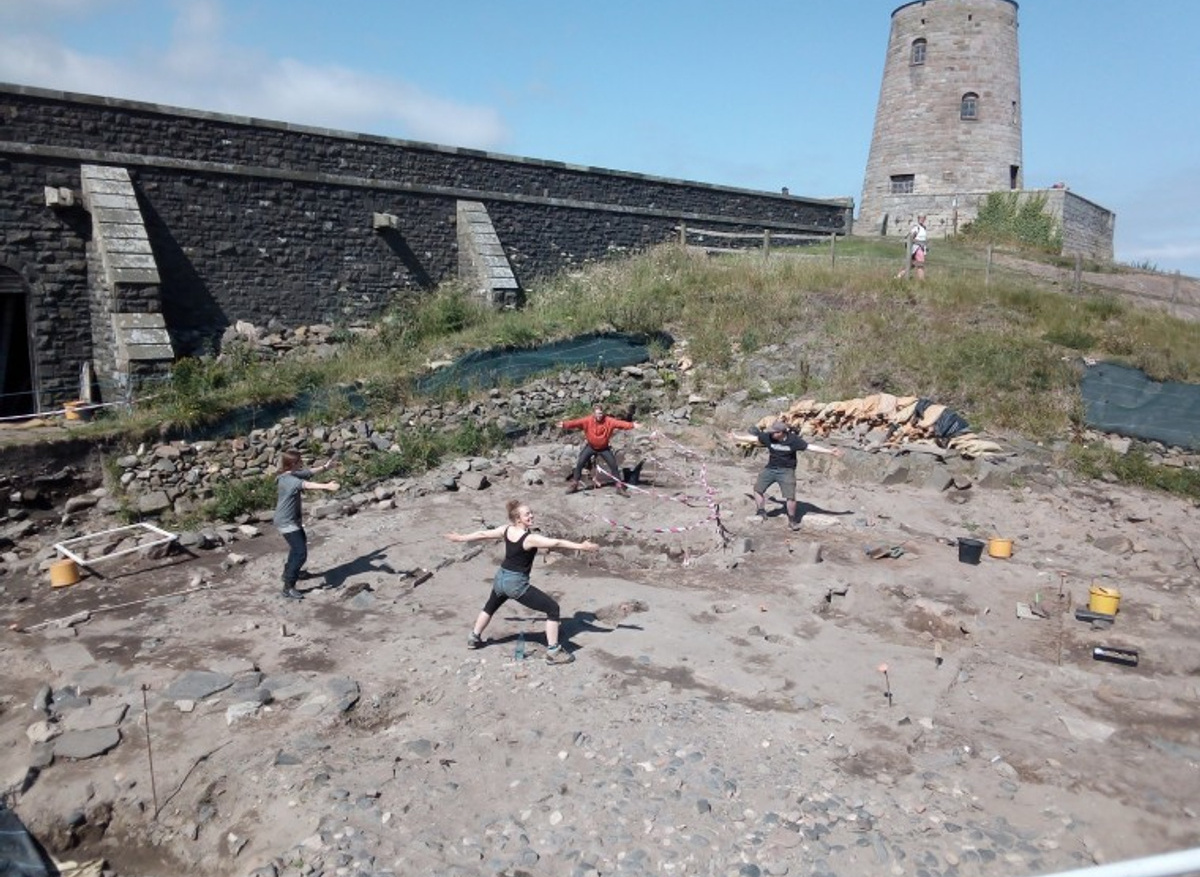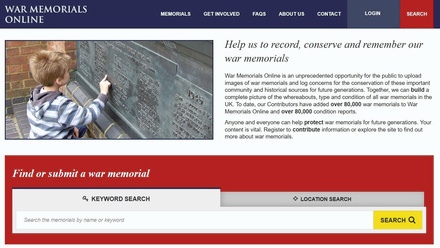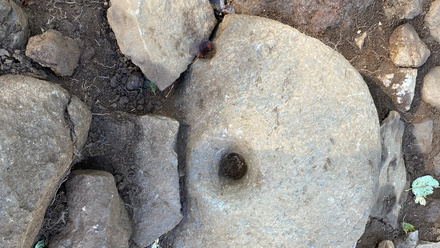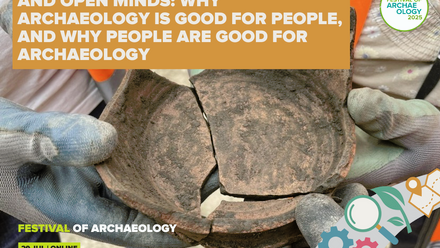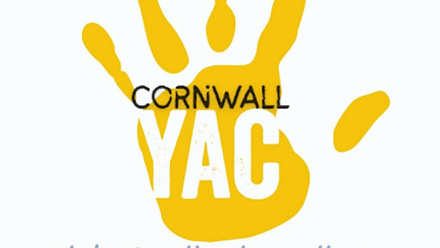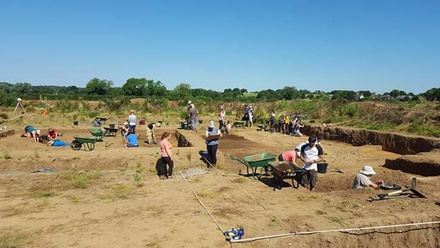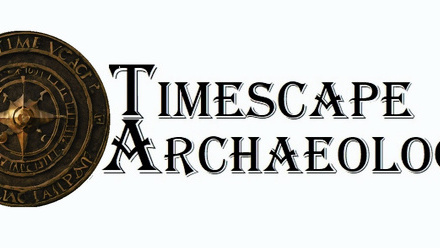There are many important jobs on any archaeological site, but for community or public projects, or even field schools, there is an additional site role that you don’t always notice: the outreach officer. But this role is all about being seen: seen as the face of the dig when the visitors arrive and as the project’s voice around the internet!
I work for the Bamburgh Research Project, an independent field school at Bamburgh Castle in Northumberland. I started here in 2012 as an intern (who gave trench tours), then 2013 as the environmental archaeology supervisor (who gave trench tours), and just this summer returned to the project as the designated outreach officer. It’s quite a different experience from my first two times around, but as my duties always included being the trench-side face of the project, I settled in rather quickly. On other sites around the UK and the eastern US, I have worked almost exclusively in community archaeology as an educator since my first job with the BRP. Nowadays, I write the daily blogs, provide social media updates on multiple platforms each day, deliver trench-side talks throughout the day, and coordinate groups visiting the dig such as Young Archaeologists’ Club events under the Council for British Archaeology.
My daily routine starts with a check of all our project accounts before I drive to site, just in case there is any pressing information or changes of plan for the day. The microblogging (Twitter) and photo posts (Twitter, Instagram) are all managed from a smartphone, while the long-form blog posts and weekly Facebook photo-dumps are completed on a laptop. Early in the season I had to sit down and have a good, long think about the voice our social media accounts would be taking. I wanted to be humorous, because I have seen how meme-literacy has helped heritage and museum organisations burst onto the stage: the Museum of English Rural Life down in Reading (specifically their “absolute unit” sheep tweet) is a sparkling example of this. I also wanted to make sure that we weren’t just a knockoff version of them, trying too hard to go viral. We have a loyal audience that I needed to inform and entertain, without charging headlong into Internet Culture and alienating them. But I also needed to get new eyes on our media, to grow our followings across all platforms. I chose to use the voice that has worked successfully for me on this project in the past…namely, my own. That sounds quite narcissistic actually, but my public-facing persona has been honed over the years at numerous community and academic archaeological projects. It’s not that different from my general personality, but it has been elevated to be accessible to all demographics rather than just those of us who live perpetually on The Internet. I needed to find that balance between informal and formal, youthfully enthusiastic and sagely from experience.
As soon as I get to site with all my various technological bits and bobs, I have one hour before the public starts to arrive. We have a quick staff meeting to discuss the day’s events, and then we break to our various workspaces. During this precious time, I work on blogs or send important emails or revise and print various permission forms for visitors. Some mornings I am working on a blog post that’s not needed until the end of the week, while others are the finishing touches on that day’s post after picking the brains of the finds and environmental archaeology department one final, extremely annoying time to make sure I’ve got the info down forwards and backwards.
When the castle opens, I check in with the trench supervisor and her team and chat with them and the students about what their jobs are for the day. It’s important for me to be on top of who is where and what their tasks are so I can best capture photographs that tell the story of the project but will also catch the eye of our supporters on social media. If I get a great photo of students laughing at the sieve, I will post that on one social media platform, but now I need to produce at least three more bits of original content to share throughout the day that don’t involve the sieve. I want visual and thematic diversity in all the posts, which means that sometimes I’m the bottom of our WWI latrine pit trying to get the perfect angle of our students working on a newly discovered feature. Just as we archaeologists balance awkwardly trying to plan complex features, so do I gracefully (read: “not gracefully”) contort myself on solid stones and sandbags to get images that are visually compelling but candid.
I also keep an eye on the wooden fence surrounding our trench, and I joke that we are also a kind of exhibit for the castle visitors. They can watch our excavation and ask questions. No talk is quite the same, because the visitors bring their own interests into our initial conversation, and then I can tailor the historical anecdotes and our project’s discoveries to what they seem most enthusiastic about. Sometimes they want to know about the Saxons, other times the Normans, sometimes the weapons, other times the food. It never gets boring telling these stories, because the diversity of visitor interests keeps me on my toes every moment!
The students take a morning tea break, which of course is the exact time that our largest tours come around just because of our own particular twist on Murphy’s Law: visitors will appear as soon as our team members stop work and sprawl exhausted on the grass with a cup of tea. It’s just a law of the universe that we need to make peace with. When work starts back up, I make the rounds of the other departments, first checking in on the students doing finds work such as washing, sorting, illustrating, or digitising records, and then stopping by our environmental archaeology station where flotation of soil samples and their subsequent analysis are undertaken. The rest of the morning is spent back at the trench answering questions until lunch, which I spend partially in the office and partially with the students. I run up to the office and post the daily blog and upload some of the pictures taken during the morning, and then stuff my face in the glorious sunshine alongside the rest of the team!
The afternoon is often spent much like the morning, but with an increased volume of visitors. When there is an ebb in the tide of tourists, I can get in the trench and do some excavation alongside the students. Sometimes, if the trench is quite busy, I am bequeathed the Trowel of Power, and I can supervise the trench activities while the trench team catches up on paperwork. I have in the past supervised trenches, but the students are sometimes surprised that I’m a proper archaeologist! This is the thing I did struggle with at first, namely that I wasn’t the person that students call immediately when they need something identified or a new task. Because I’m not in the trench all day, I sometimes wasn’t really seen as an archaeological resource, but rather just the woman with the camera and all the social media logins. Wow, did I need to check my ego! To be honest, I’m still working on that.
When the outer ward of the castle finally closes, I head back to the office to work on outlining blogs for the rest of the week, and map out what research and writing I need to do at home that evening to stay on top of everything happening on site for the next day.
If you are trying to find the right role for yourself within an archaeological project and more importantly you love talking to people and teaching a diverse audience, outreach might be the job for you! Outreach Officers can do multiple jobs, so you don’t always need a separate person unless you have a very large media presence to manage. Most of the sites I’ve worked on have involved outreach as something of a project afterthought, rather than a dedicated initiative among the staff. Sometimes that is how outreach for a project starts, but it is my hope that more community and educational digs will have a designated public-facing presence. That is how we get archaeology and heritage education in the mainstream, that is how we teach stewardship, and that is how we can continue to support our efforts to better understand the past.

